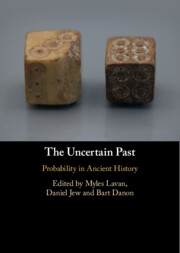Part II - Variability and Missing Data
Published online by Cambridge University Press: 18 November 2022
Summary

- Type
- Chapter
- Information
- The Uncertain PastProbability in Ancient History, pp. 195 - 302Publisher: Cambridge University PressPrint publication year: 2022



